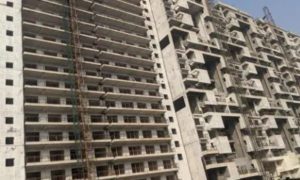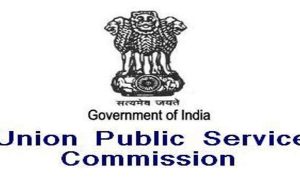The government has identified redevelopment of seven General Pool Residential Accommodation Colonies located in Delhi’s Sarojini Nagar, Naoroji Nagar, Netaji Nagar, Sriniwaspuri, Thyagraj Nagar, Mohammadpur and Kasturba Nagar, which involves an estimated Rs 32,276 crore investment.
The government plans to monetise urban real estate assets worth an estimated Rs 15,000 crore, warehousing assets worth Rs 28,900 crore and stadiums worth Rs 11,450 crore under the National Monetisation Pipeline (NMP). Experts say this is a win-win proposition for both the government and the private sector as it will bring investments in infrastructure, inject efficiency in the system and generate revenue.
Finance Minister Nirmala Sitharaman on August 23 announced a Rs 6 lakh crore Redevelopment of seven residential colonies in Delhi, including those at Sarojini Nagar and Nauroji Nagaras as well as development of residential/ commercial units on 240 acres of land in Ghitorni in Delhi has been identified to garner Rs 15,000 crore.
Urban assets – Redevelopment of colonies
As per the document prepared by Niti Aayog, the urban real estate assets have monetisation potential of around Rs 15,000 crore during the financial years 2022-25. The government has identified redevelopment of seven General Pool Residential Accommodation (GPRA) Colonies in Delhi. These seven colonies are located in Sarojini Nagar, Nauroji Nagar, Netaji Nagar, Sriniwaspuri, Thyagraj Nagar, Mohammadpur and Kasturba Nagar.
The total estimated investment on redevelopment of these seven colonies is Rs 32,276 crore.
The Centre has also identified development of residential/commercial units on 240 acre land in Ghitorni (Delhi). In this project, 8,000 units of GPRA and 3,000 units for migrant construction workers will be developed. The estimated investment is Rs 15,000 crore.
The ministry of housing and urban affairs (MoHUA) owns and manages land through the Land and Development Office (L&DO). PPP-based model is recommended for redevelopment of such GPRA projects cross subsidized through sale/lease of commercial BUA, the National Monetisation Pipeline report by NITI Aayog said.
Proposed projects are real-estate projects which envisage mixed-use redevelopment of vacant tract/brownfield sites at prime locations in Delhi–NCR. They entail development of general pool residential accommodation and commercial office complexes in one of the most prime areas of the country through a self-funded mechanism, it said.
Considering the prime location and attractive commercial potential of the project, their development is recommended through private sector participation. This will not only enhance the commercial and operational efficiencies but also ensure upfront/periodic consideration to the Authority/Ministry of Housing and Urban Affairs, the report said.
Plans for warehousing
The Centre plans to monetise warehousing assets of state-owned firms Food Corporation of India and Central Warehousing Corporation over the next four years for an estimated Rs 28,900 crore under the National Monetisation Pipeline (NMP).
“The potential asset base considered for monetisation under warehousing assets consists of storage depots, warehouses under the central sector agencies, Food Corporation of India (FCI) and Central Warehousing Corporation (CWC),” NITI Aayog said in its report.
Both FCI and CWC operate under the aegis of Department of Food and Public Distribution. The existing storage capacity with FCI and other agencies for central pool stocks as on April 1, 2020 is 755 lakh tonnes. Out of this, 412 lakh tonnes is available with FCI and 343 lakh tonnes with the state agencies.
“The potential assets for monetisation are owned warehouses of FCI and CWC,” the report said.
“Out of the FCI available asset base, FCI owned storage infrastructure i.e. about 123 lakh tonnes is amenable for monetisation as the facilities have a strong potential for augmentation and capacity expansion. CWC’s entire capacity of 110 lakh tonnes is amenable for monetisation as it has a revenue stream (in form of storage charges from FCI & other users) and also a strong commercial potential for augmentation, capacity expansion and O&M,” the report said.
The key asset classes under asset monetisation include (i) development of 175 lakh tonnes of wheat silos by FCI, (ii) development of 35 lakh tonnes silos at 45 locations by CWC, (iii) development of cold storage facilities in 190 locations by CWC, and (iv) development of 1.16 lakh tonnes storage capacity by Central Railside Warehouse Company Ltd (CRWCL).
“The total value of assets considered for monetisation is estimated at Rs 28,900 crore for FY 2022 to 2025,” the report said.
Multiple structures to monetisation have been evaluated, including InvIT, OMD (Operate, Manage and Develop) model, the report said.
Ramesh Nair, Chief Executive Officer, India & Managing Director, Market Development, Asia at Colliers said that the government’s National Monetisation Pipeline scheme is a timely step to unlock value and usher in investments across a plethora of sectors. Under the scheme, the ownership of the assets will be with the government, while the private-sector entity will refurbish and operate it either solo or through a public-private-partnership.
“Warehouses, accounting for 5 percent of the total monetisation plan with monetisation value of Rs 28,900 crore, have immense potential, especially led by the current growth spurt in the e-commerce space. This plan will give investors and developers access to well-located warehouses near urban centres, providing an impetus to the last-mile delivery ecosystem. Moreover, since the assets are brownfield there will be minimal development risk associated for investors and developers,” Nair said.
NMP taps private sector efficiencies
Experts said the monetisation plan was a win-win scheme for both the government and the private sector.
“This will lead to a multiplier effect on the local economy to boost retail, real estate, industrial, tourism and generate employment opportunities, while also help unlock public-sector potential through investments in Infrastructure, tapping private sector efficiencies through Public-Private Partnership (PPP) and create other sources of revenue. Key to success is to adopt best practices from past experience in asset monetisation along with engaging professions to reach out to the global market for better realisation of value,” said A Shankar, Head – Strategic Consulting and Valuation Advisory, India, JLL.
Anuj Puri, chairman – ANAROCK Property Consultants, said the monetisation programme should not be confused with disinvestment as the government has clearly maintained that all the brownfield projects (warehousing and stadium assets) will have some government control.“It is largely doing away with the management and operation and letting private players take the charge. This is essentially good as the concerned assets will not only enable the government to collect good revenues but will be well-maintained once they go into private hands. For instance, several stadiums across cities are at central locations but are not adequately maintained. Private players will ensure proper maintenance and upkeep and attract investments just as we are seeing in case of ports. Likewise, several warehouses have not been properly maintained because of which grains often lie waste,” he said.





































